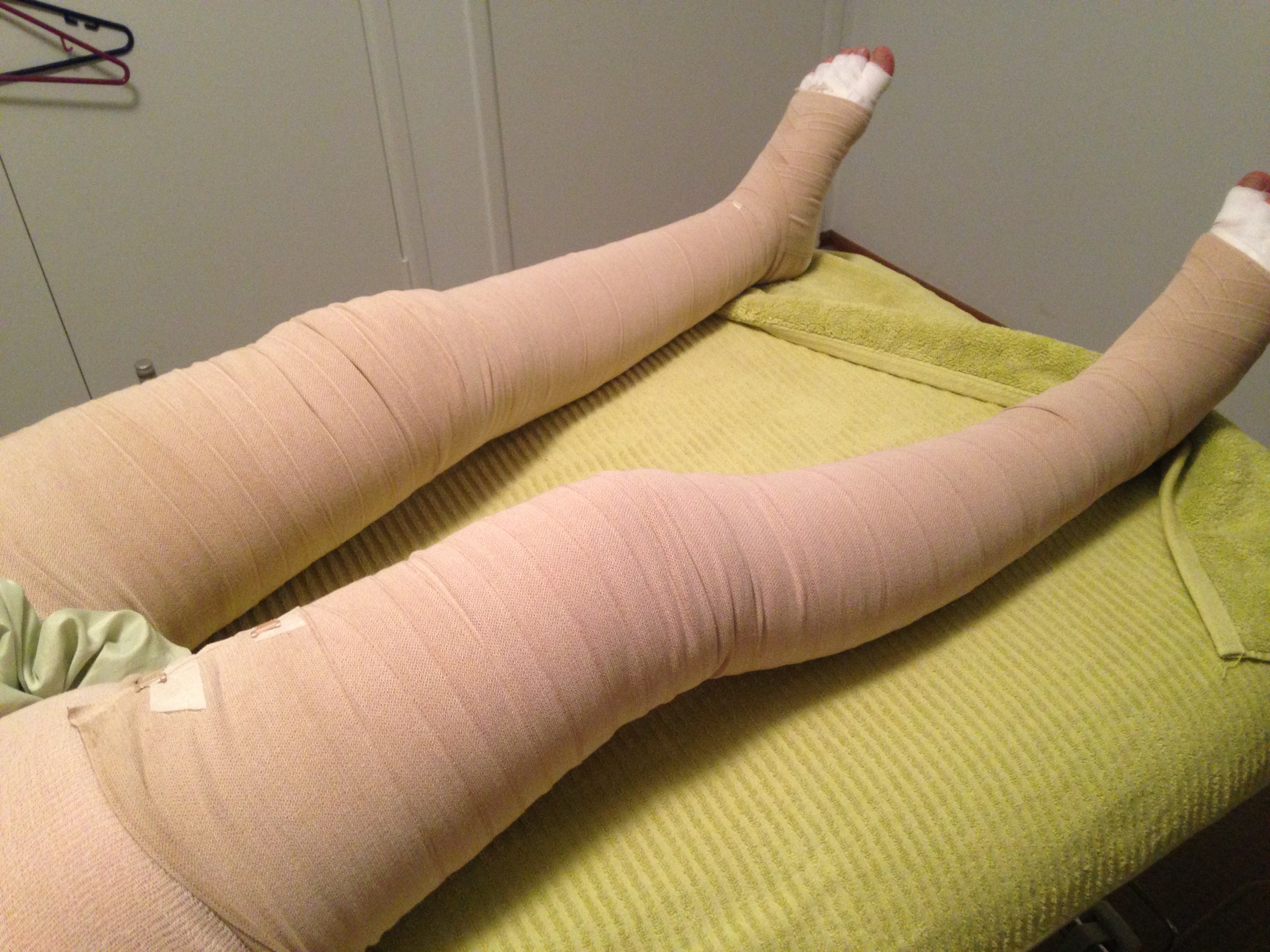Medically reviewed by Joanne Price DLT, MLDT & RMT.
Living with Lipedema is extremely difficult to come to terms with. No matter which stage you’re currently suffering with, if you have some of the nastier Lipedema symptoms such as pain, discomfort and swelling, it can be a lifelong battle.
Typical Lipedema symptoms include:
- Column shaped legs with no defined knees or ankles
- Swelling of the lower limbs, and sometimes arms
- General body shape is usually disproportionate
- There’s often a pad of fat just under and next to the knees and hips
- Feet or hands are not affected
- Lipedema related pain in the joints, especially the knees
- Tenderness of the tissues
- Limbs will often bruise easily
- Fat nodules causing a lumpy texture to the skin similar to cellulite
- Diet and exercise will not improve the Lipedema affected areas
- There is often a family history of the condition
More and more women are opting for Lipedema liposuction procedures, such as WAL Liposuction, to halt the progression and alleviate their symptoms. However, I understand that Lipedema surgery isn’t an option for everyone. It is very costly and a serious medical procedure that puts your body under strain and takes time to recover.
Can Lipedema be treated at home?
So if surgery isn’t an option for you, I’m sure you’re asking yourself: how can I treat Lipedema at home? Unfortunately, we know Lipedema can’t be cured. But it definitely can be managed. There are various conservative measures you can incorporate into your daily routine to manage Lipedema symptoms and slow down the progression. I personally carry out all of the below and it has given me a new lease of life – less pain, swelling and discomfort!
Obviously, every case is different but why not try each one and monitor the results on your body. Who knows, it could give you some well needed relief from the draining day to day struggle of a women suffering with Lipedema.
Lipedema natural treatments
Lifestyle changes
This may include maintaining a healthy anti-inflammatory diet for Lipedema and exercising regularly. Light exercises such as yoga, walking and swimming are great for Lipedema sufferers.
Compression therapy
This involves wearing Lipedema compression garments such as stockings or bandages to help reduce swelling and improve lymphatic flow.
Physical therapy
This includes massages designed to improve lymphatic flow such as MLD (Manual Lymphatic Drainage), Myofascial massage and dry brushing for Lipedema. Myofascial massage releases muscle tension, reduces fibrosis and also improves lymphatic flow. It’s firmer than MLD, but should never be painful and always at the right pressure for each individual client. Many lippy sufferers have this sort of treatment and it can make a great deal of difference.
Vibration therapy
Low-frequency vibration therapy considerably improves the effectiveness of Manual Lymphatic Drainage (MLD) in patients with Lipedema. Benefits include pain reduction, improved lymphatics system and less swelling. Here is a breakdown the benefits of using a vibration plate for Lipedema.
Red light therapy
Red light therapy for Lipedema helps reduce inflammation and stimulates healing, so it is said to relieve the pain and swelling caused by the condition.
Conservative treatments for Lipedema
Managing Lipedema at home can feel overwhelming, but taking consistent steps towards symptom relief can make a huge difference. While there’s currently no cure for Lipedema, incorporating natural treatments like compression therapy, eating an anti-inflammatory diet and lifestyle adjustments can help you regain a sense of control over the condition. Small, manageable changes in your daily routine – such as using a vibration plate, practising red light therapy and regular MLD massages – can ease the pain and swelling that often accompany the condition.
If there’s anything else you’ve discovered that significantly helps reduce your Lipedema symptoms, please send me an email on so****@***********me.com or comment below. I’m always open to new or interesting measures to help us lippy ladies lead as normal a life as possible.
Disclaimer: This article has been medically reviewed by Joanne Price DLT, MLDT & RMT to ensure accuracy. However, it is provided for informational purposes only and should not replace in-person medical advice. Always consult your doctor or a qualified specialist for diagnosis and treatment.



I belive I have this and no dr ever diagnosed me with it but my knees have hurt since I injured my right one. I gained so much weight after having a tie cut burn to stop having kids. My mom had bad legs too. As well my father’s mother. I now have an acquired issue of diabetic I always had an issue with my legs since my childhood .they were weak and at one point my muscles were not awake it took a shot of Glucose to wake them up. That was the early 1970s.
Today Dr’s ate not as concerning as they were back in the 1960-70s. My leg now go from cold to hot in minutes if cold I heat them with a heat pad. If to hot I undress them. Hoping to get some help I am 63 . And the hot tub issue I love the hot tub it helps my back with my 3 herniated discs…
Can you teach us how to do red light therapy.
Thank you Brigitte